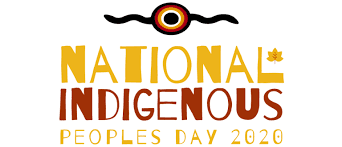The rich history and vast contributions of Native Americans has echoed throughout the soil of the United States long before explorer’s ships arrived on the shorelines. Despite this, in 1934, President Franklin D. Roosevelt designated Columbus Day as a national holiday that celebrated this historical
figure’s voyage to America hundreds of years ago. To honor, respect, and recognize the past and present lives of Native Americans, Indigenous Peoples’ Day has increasingly been adopted by a growing number of cities, universities, and states.
In recognizing and celebrating Indigenous Peoples’ Day, the United States is finally representing the evolution of a collective, lengthy effort to acknowledge the role of indigenous people in this nation’s history. This rather newly recognized holiday is celebrated through parades, festivals, and educational panels. Altogether, this holiday aims to reveal the truth behind colonization within the United States while being an International Day of Solidarity with the Indigenous Peoples of the Americas.
Not by coincidence, Indigenous Peoples’ Day takes place on the same day in which Columbus Day occurs. The acknowledgement of this holiday goes back to 1977, in which Indigenous leaders from around the world organized a United Nations conference in Geneva. This conference aimed to emphasize the self-determination and sovereignty of the past and present Indigenous people. While it was first celebrated as Native American
Day in South Dakota in 1982, Berkeley, California was the first city that officially acquired Indigenous Peoples’ Day in 1992.
The movement aimed to respect and celebrate Indigenous culture while also heightening awareness regarding Columbus’s horrendous treatment of
Indigenous people. Since then, even more cities, including Seattle, Los Angeles, Denver, Phoenix, and San Francisco have replaced Columbus Day with
Indigenous Peoples’ Day. In September of 2007, over thirty years later, their work was formally (and finally) recognized in the United Nations Declaration on the Rights of Indigenous Peoples.
So why are people advocating for Indigenous Peoples’ Day to take the place of Columbus Day? For Native Americans, the celebration of Columbus Day has often been a reminder of cruelty and enslavement. Many American classrooms and textbooks appear to honor Columbus, painting him as a figure that brilliantly found the shores of the present-day United States; meanwhile, these same classrooms and textbooks neglect to share the greatly negative impacts this had on the Native Americans. Columbus Day, a federal holiday, has consistently failed to mention the mass killings and brutality endured by Native Americans in the name of western colonization.
In addition, this day communicates to present-day ancestors of those Indigenous ancestors that their demise is worth having a holiday for. That the
individuals responsible for their ancestor’s demise are heroes. That the United States was better off for their unutterable suffering. In other words, while Columbus Day proclaims the narrative of a nation built by Europeans for Europeans, Indigenous Peoples’ Day accentuates Native histories and Native people— a valuable addition to the United States’ constantly evolving apprehension of the truths that linger in the depths of American soil.
In areas in which Indigenous Peoples’ Day is celebrated, the holiday is marked by various festivals, parades, and educational gatherings. These events yield a space for Indigenous people to observe their cultures through music, dance, performances, films, artwork, meals, and the sharing of indigenous knowledge. Particularly, in 2019, Los Angeles celebrated Indigenous Peoples Day through hosting a festival centered around the theme of past, present, and future, specifically advocating against the injustices faced by so many Indigenous peoples. This festival also recognized the first peoples to make up modern-day Los Angeles: the Tongva, Tataviam and Chumash Nations. Overall, Indigenous Peoples’ Day admires Indigenous culture and history while recognizing the change that needs to occur within the United States’ approach in telling the American narrative.

